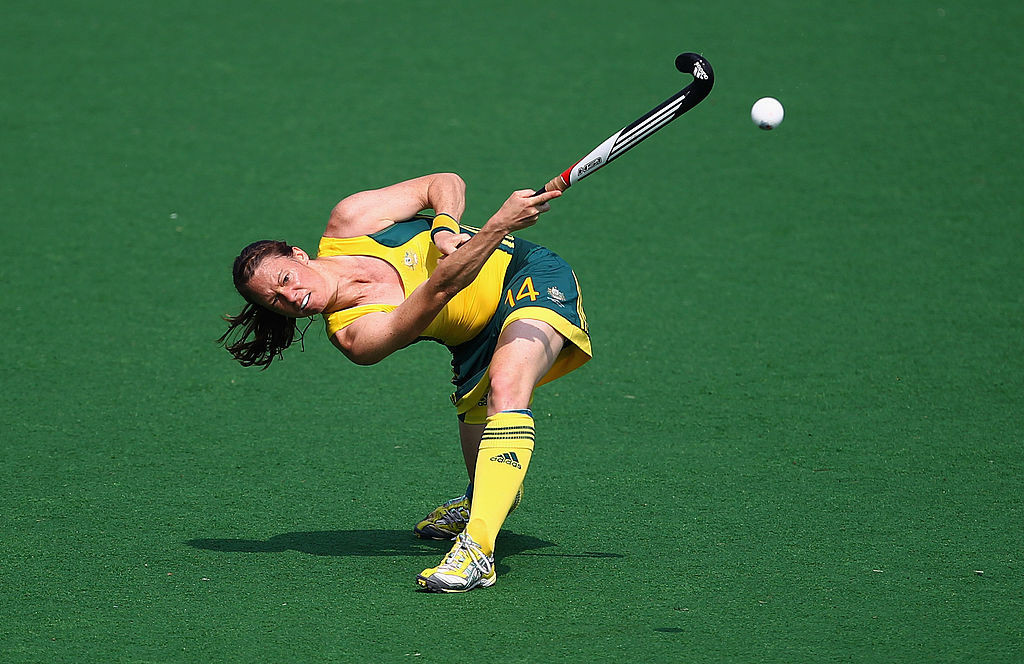In Australia, hockey is played at clubs, schools, and indoor centres – and is one of Australia’s most successful sports both in the men’s and women’s divisions.
Worldwide, it’s considered as popular of a sport as soccer in many countries.
Hockey places many demands on the technical and physical skills of players. During the course of play, players accelerate, decelerate and change direction all whilst trying to hit, pass, stop/trap or dribble the ball. As a result, injuries can and do occur regularly.
Sports Medicine Australia says that the rate of injury in community level hokey is 15/1000 playing hours and that approximately one injury will occur every three games or four training sessions.
Types of injuries in hockey
Extrinsic injuries
Extrinsic injuries are ranging from 60% to 80% of all injuries. Most extrinsic injuries reportedly result from being struck by a hockey stick or ball.
Intrinsic injuries
Intrinsic injuries are due to internal forces acting on muscles, tendons, ligaments, or joints. Intrinsic injuries can result in tearing muscle fibers (strain), tearing ligament (sprain), tearing cartilage, and localised bleeding and swelling. Intrinsic injuries are reported to account for 11–18.5% of all hockey injuries.
Overuse injuries
An overuse injury is any type of muscle or joint injury, such as tendinitis or a stress fracture, that’s caused by repetitive trauma.
An overuse injury typically stems from:
1. Training errors – Training errors can occur when you take on too much physical activity too quickly. Going too fast, exercising for too long or simply doing too much of one type of activity can strain your muscles and lead to an overuse injury.
2. Technique errors – Improper technique can also take its toll on your body. If you use poor form as you do a set of strength training exercises, swing a golf club or throw a baseball, for example, you may overload certain muscles and cause an overuse injury.
Field hockey is often played on artificial turf, and consists of quick starts, stops and turns, and therefore a sprained ankle is quite common.
Players may also sustain injuries to the head, face, shoulder, arm, thigh and knee. This may occur with or without contact with other players, from blows from a stick or a ball, or from being run into. Common injuries include pulled muscles in the thigh and groin, blows to the thigh and sprained joints, especially in the knee, shoulder and elbow.
Field hockey players may also develop overuse injuries from repetitive movements. Because of the low positioning of the body while playing, the lower back, groin, knee and calf are particularly vulnerable to overuse injury.
Concussions are also a problem in the sport, being reported as the greatest injury concern in all forms.
Most common injuries in hockey
- Ankle sprain
- Hand/wrist injuries
- ACL
- Hamstring strains
- Shin splints
- Concussions/facial injuries

HOW TO AVOID INJURIES playing hockey
As we learn more about the types of injuries that most commonly occur in field hockey, it is possible to design and implement strategies targeted to injury prevention.
Ankle sprains
Ankle sprains are the most common injury in most sports and occur when the ankle “tunrns in” more than it should. Ligaments connect the bones of the ankle together. When a ligament is stretched or torn, a “sprained” ankle is the result. Ligaments are tough bands of tissue, but when they are pulled to their limit, they can tear. If the tear is bid, the result is a bad sprain.
Flexibility, strength and good balance can help prevent ankle sprains from happening.
Ankle exercises:
- Improving calf strength (standing and seated calf raises)
- RFD (PoGo’s, repeated hurdle jumps, drop jumps, depth jumps)
- Ankle mobility (knee to wall stretch, eversion and inversion ankle range)
Hand/wrist injuries
Proper wrist flexibility and stability is important to help prevent injury.
In Hockey, most hand/wrist injuries happen due to direct contact with an opponents stick. Although this can be hard to avoid, proper wrist and hand strength and flexion can help you avoid injuries sustained from landing or falling – which also is quite common in the sport.
Hand/wrist exercises:
- Grip/Forearm Strength (Loaded Carriers, Finger Plate holds, Rope Chin ups, Reverse Curls)
ACL (knees)
Knee Injuries in field hockey are very common especially in the younger players 11+ years. This is because the sport demands on the knee joints are high.
Players lunge at the ball, sprint and change direction constantly in game. These are all factors that can lead to knee injuries, particularly ACL tears.
The good news is if we train ourselves to move in certain ways it can really help to reduce that risk.
Knee exercises:
- Any Bilateral and Unilateral Lower limb knee dominate exercise
Hamstring injuries
Hamstring strains are most common among sports that require a high degree of speed, power and agility such as Hockey.
The major cause of hamstring injuries originates from an imbalance between the quadriceps muscle and the hamstring muscles (located at the front and back of the thigh respectively).
Acute hamstring strains occur due to a sudden movement or force being applied to the hamstring muscles.
Prevention:
- Completing a thorough general body warm up, which includes sport-specific muscle stretching as well as sport specific skill drills.
- Including appropriate speed work in training programs so the hamstring muscles are capable of sustaining high acceleration forces.
- Maintaining high levels of cardiovascular fitness and muscular endurance to prevent fatigue.
- Stretching and cooling down after every training session and competition.
- Including stretching and strengthening exercises in weekly training programs.
Hamstring exercises:
- Hips and Knee dominate exercises (Deadlift, RDL, GHR, Nordic, Hamstring Curl, Glute Raises)
Speak with a professional
Accredited exercise professionals are university-qualified and equipped with the knowledge and skills to improve health, fitness, well-being, performance, and assist in the prevention of common injuries throughout all sports.
To find an accredited exercise professional near you, click here.
READ MORE LIKE THIS

The Nike Run Club gives you the guidance, inspiration and innovation you need to become a better athlete. Join Nike Run Club to reach your goals and have fun along the way. Download to get started.
,


